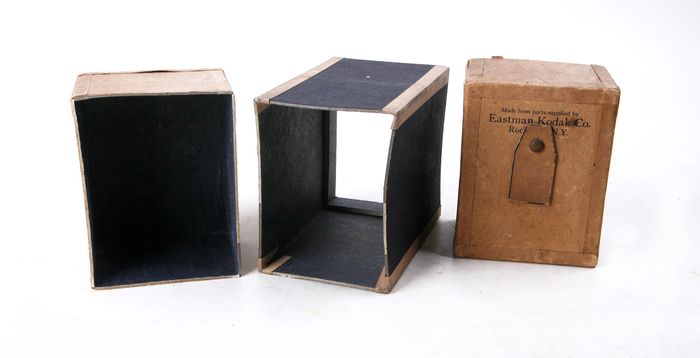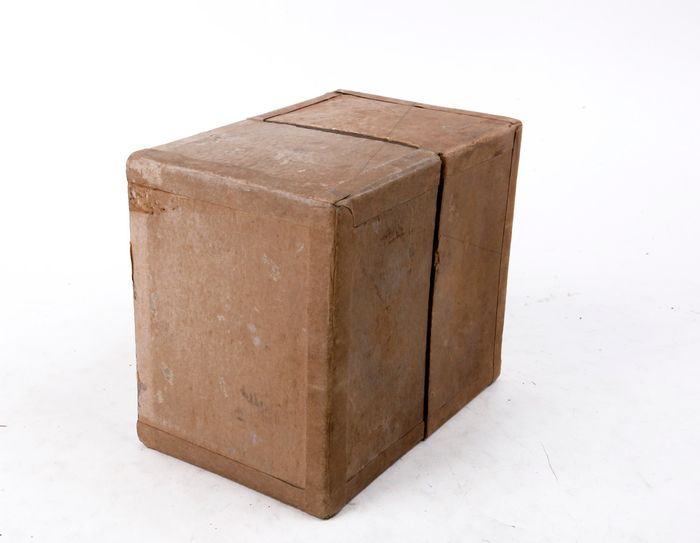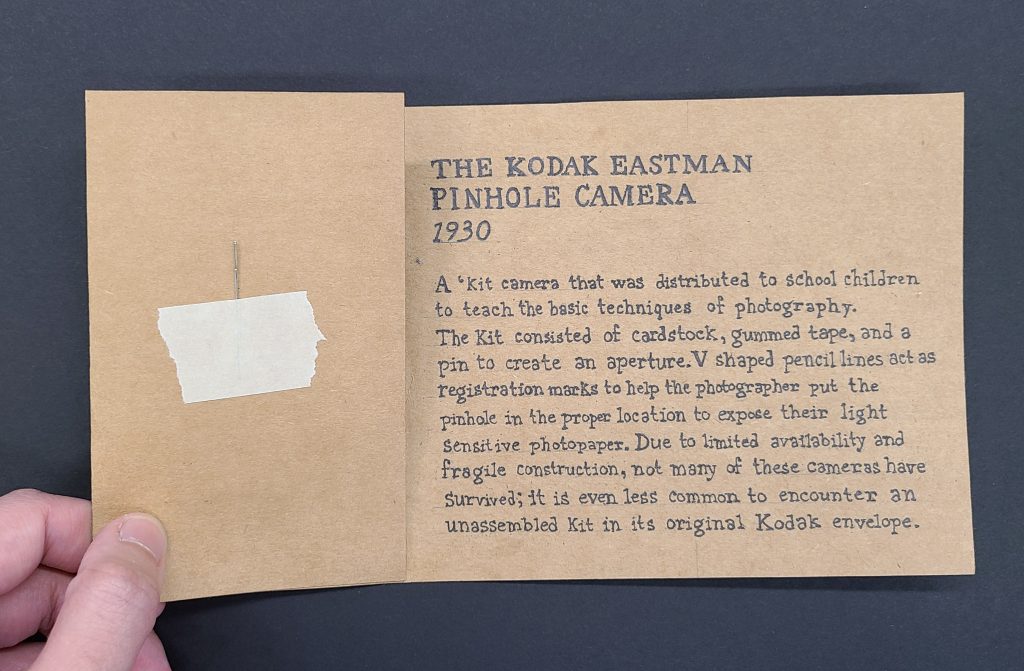Initially, you’d think that since I love graphic design and printmaking so much, surely I’d do some kind of magazine cover, poster or something along the lines of that. I thought so too—but I decided to go a bit out of my comfort zone this time and make a physical 3D object instead of going for 2D. I thought it would be nice to really work with the material I had and to actually construct something for once.
Keeping in mind that I wanted to make something 3D (all from scratch), I decided to recreate Kodak’s Pinhole Camera that was distributed to school children in the 1930s, along with a makeshift exposure guide on how to time your photograph depending on lighting conditions. I even integrated the museum card with the manual as well, so everything can be bundled together and not be in multiple pieces.
The Finished Product
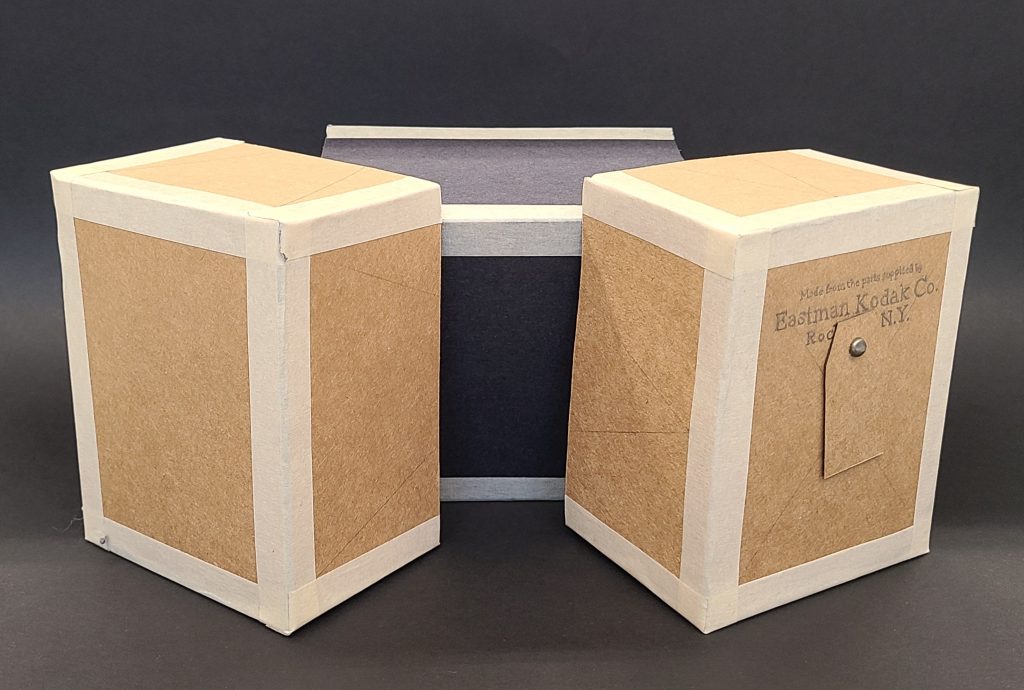

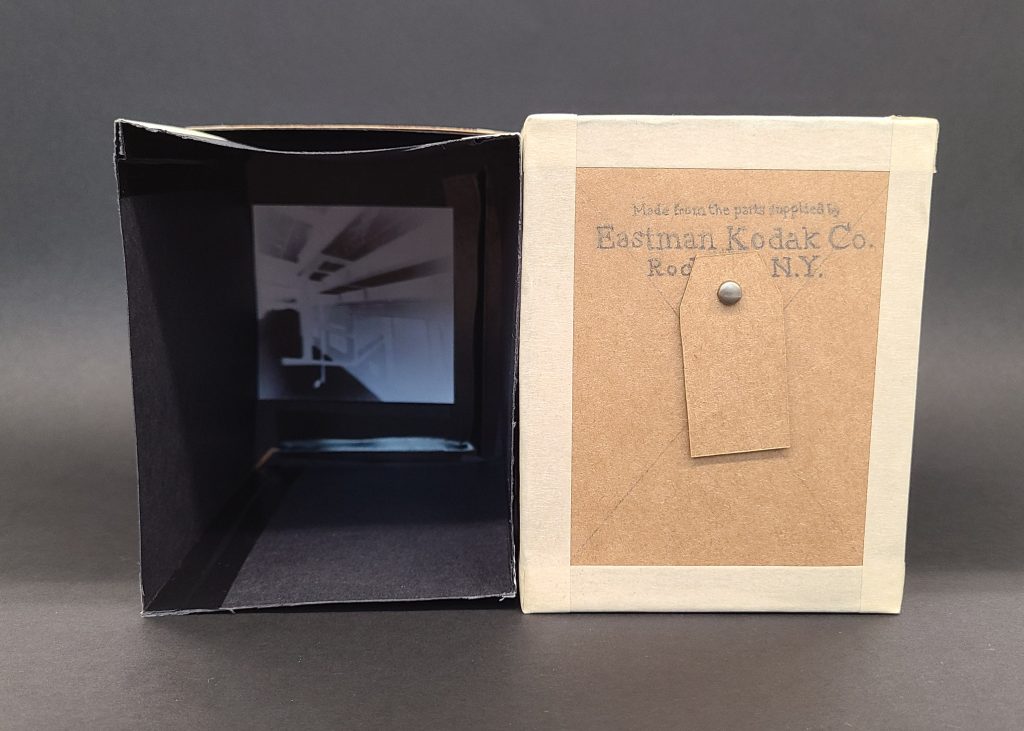

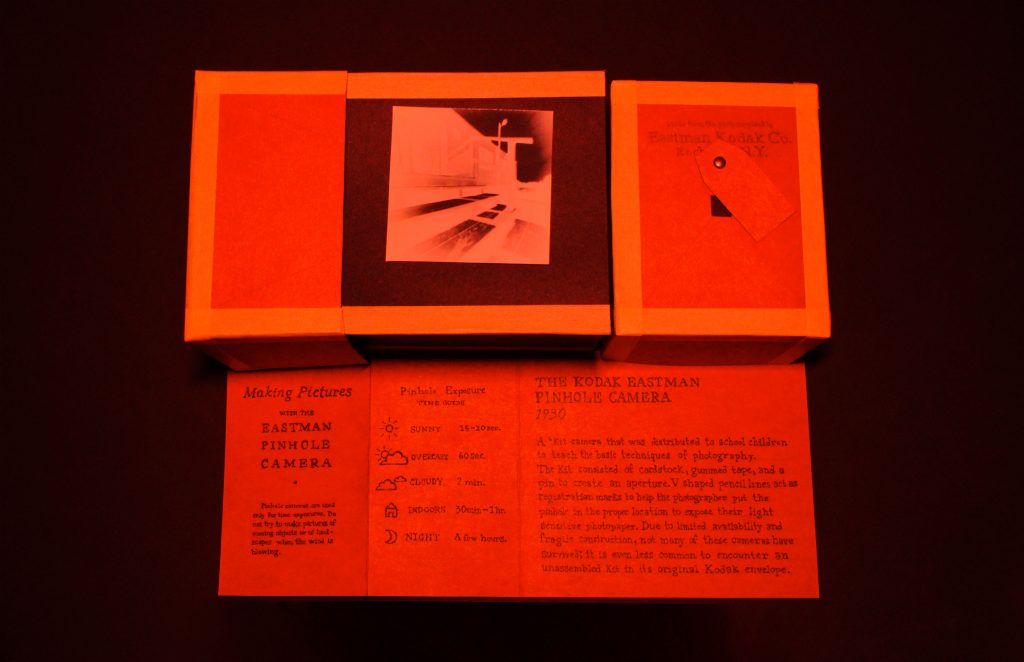
I’ve spent about 9 and a half hours from start to finish on this project; from creating box templates and prototypes to meticulously gluing cardstock together, and cutting out said templates, and using super glue and tape to stick things together. I even looked up some architectural tutorials for model making which helped a ton. I’m pretty satisfied with the final outcome, although I wish I could have made it look more weathered down. Another thing I would change is the composition of the photograph I took; I opted for a top-down view to mimick someone looking down at the camera as if they were in a dark room, but because of that I had to deconstruct the camera. I also decided to ditch the idea of having additional photographs because it would become too busy and take away from the example I provided. Due to those points, I would give myself an 8/10.
Works Cited
“History of the Pinhole.” Corine Hörmann Pinhole Photography, 19 Sept. 2021, https://www.corinehormann.nl/history-of-the-pinhole/.
“Kodak Pinhole Camera.” Jon Grepstad, 23 Oct. 2015, https://jongrepstad.com/kodak-pinhole-camera/.
Pinhole Cameras, http://facweb.cs.depaul.edu/sgrais/pinhole_cameras.htm.

